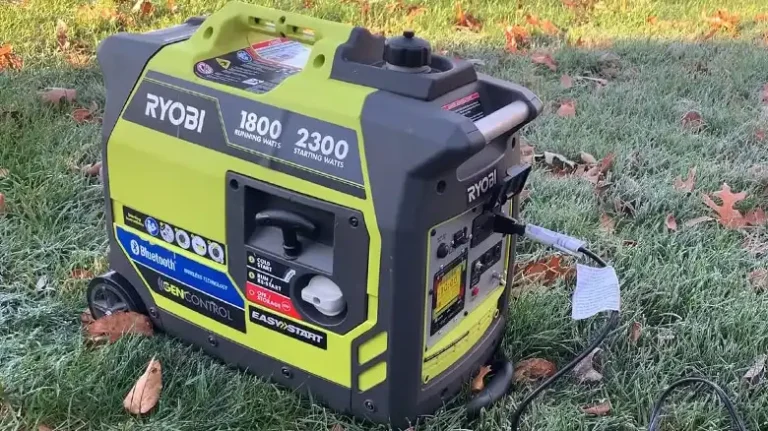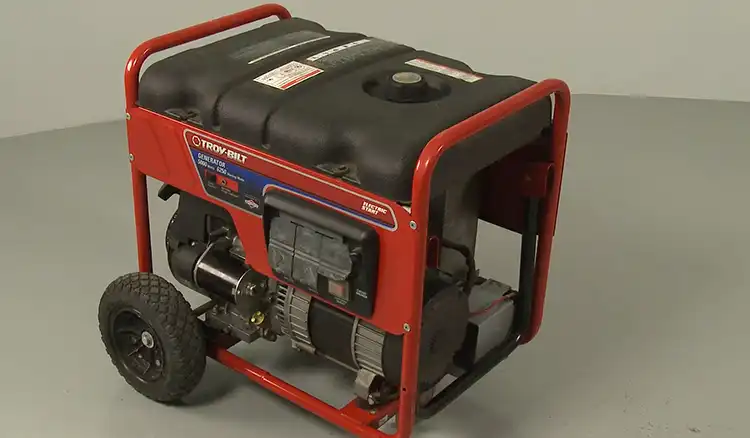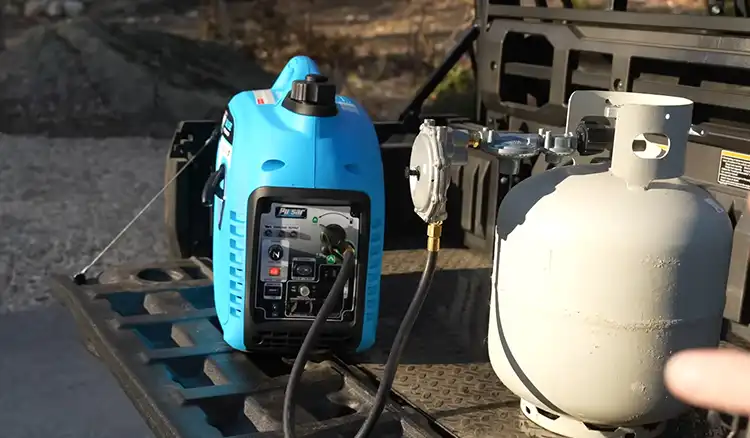Why is Your Generac Generator Not Starting? Resolving Issues
Generac generators are popular choices for backup power during outages. With the ability to automatically start up and supply electricity when the main power fails, Generac units provide crucial, uninterrupted access to necessities like lights, refrigeration, and medical devices. Unfortunately, sometimes these trusted generators fail to start when needed most.
The most common issues leading to a no-start condition include stale or insufficient fuel, battery problems, failed starters, and ignition system troubles. By methodically inspecting key components and systems, the specific cause of the starting difficulty can be identified and repaired to get your Generac running again quickly.
Getting a bulky generator started again takes some electrical and mechanical troubleshooting knowledge. However, with a logical diagnostic approach focused on the most likely culprits, anyone can get their Generac generator cranking out power once more. This article explores the typical reasons Generacs fail to start and provides actionable solutions to restore its starting reliability.

Initial Inspection for Generac Generator Starting Issue
When a Generac generator fails to start, conducting an initial inspection of key systems can help pinpoint the cause before moving on to more advanced diagnostic steps. Taking a methodical approach to inspecting common trouble areas on a non-starting Generac can get the engine up and running again quickly.
A. Fuel Supply
Fuel-related issues are one of the most common reasons a Generac generator won’t start. Checking a few key areas associated with the generator’s fuel supply can reveal simple problems that are keeping the engine from firing up.
The first thing to check is the fuel level in the generator’s tank. Make sure there is ample fresh gasoline before troubleshooting other potential issues. Generac specifies the fuel level should not fall below 1/4 tank to ensure proper operation.
If the tank is very low or empty, refill with fresh 87+ octane unleaded gasoline from a reputable source. Use a fuel stabilizer if the gasoline will be sitting for more than 30 days. Check the fuel fill cap to ensure it is tightened properly after refueling.
Over time, gasoline can go bad or become contaminated with debris, water, varnish residues, and other impurities. Using old or dirty fuel is a common reason for startup failures.
Inspect the fuel visually. It should look clean and be free of cloudiness or particles. Stale gasoline often takes on a yellowish tint. Smell the fuel – rancid or strong odors indicate contaminated fuel. Consider draining old gasoline and adding new if deterioration is suspected.
Adding fuel stabilizer periodically helps keep gasoline fresh for storage. However, fuel over 1 year old should be drained and replaced to prevent startup problems.
Generac generators have a fuel shut-off valve that stops the flow of gasoline when switched to the closed position. Check that the fuel valve is turned ON before attempting to start the generator. The valve lever should be parallel with the fuel line when open.
Turning the valve OFF is a way to prevent carburetor flooding when the engine is not in use. Just be sure it’s open before cranking the starter!
B. Air Intake and Filters
In order for the engine to start, the generator needs proper airflow into the combustion chamber. Blockages or excessive debris can cut off air supply and prevent startup.
Make sure the air intake opening on the generator is clear of any obstructions, dirt, leaves, insect nests, etc. Carefully use a small brush or compressor air nozzle to remove any debris restricting the intake opening.
Also check that debris has not collected around the cooling slots and openings on the generator enclosure. Excessive debris buildup around the engine can cause overheating and affect airflow.
Generac generators have an air filter element that screens out dust and particles from intake air as it enters the carburetor. Over time, the air filter can become clogged with debris and restrict air intake.
Remove the air filter cover and inspect the filter element. Look for excessive dirt buildup or damage. Clean gently with compressed air if the filter is only lightly soiled. Replace the element if it’s bent, damaged or cannot be sufficiently cleaned.
Reinstall the cleaned or new filter tightly in its housing. Run the generator briefly to ensure the intake air path is clear before conducting further diagnostics.
C. Oil Level
Maintaining proper oil level in the engine crankcase is essential for Generac generator operation. Oil level safety features may prevent startup when oil is low.
Check the oil level with the dipstick and top off if needed before attempting to diagnose hard starting issues. Generac recommends SAE 10W-30 for normal temperature operation. Refer to the owner’s manual for oil fill/drain procedures.
Adding oil to bring the level to the “Full” mark can allow startup if a low oil sensor is interrupting ignition. Make sure to find and address any oil leaks once the generator is running again.
Many Generac generators have a low oil pressure shutoff designed to prevent engine damage from insufficient lubrication. This safety sensor disables ignition if oil drops below safe levels.
Trying repeatedly to start the generator with low oil can cause overheating and starter motor damage. Top off the oil first if oil level is suspect as the cranking problem.
Diagnostic Steps of Generac Generator Starting Issue
If checks of the fuel system, air intake, and oil level reveal no obvious issues, more advanced troubleshooting is required. Generac generators provide diagnostic clues to help isolate hard starting problems.
A. Control Panel Indicators
Generac generators have an electronic control panel that alerts users to problems with indicator lights. Check all gauges and panel lights for clues before starting.
Warning lights for low oil pressure, overtemperature, overcrank, and other sensor alerts indicate issues that will prevent startup. The display may also show error codes pointing to specific problems.
Consult the owner’s manual to interpret warning lights and fault codes. Address reported issues before attempting startup. Resetting the panel system may be required to clear some reported faults.
B. Manual Starting Procedure
Many Generac models have a manual start function using the priming bulb and/or start switch instead of electric start. Attempt to start manually as a diagnostic test if electric start fails.
Refer to the owner’s manual for the correct sequence of steps, such as turning on fuel valve, closing choke, priming bulb pumps, activating glow plug, and holding start switch.
If the engine starts manually but not through electric start, it points to an issue with the battery, starter motor, or connections rather than a larger mechanical problem.
C. Using Diagnostic Tools
For generator cranking issues not resolved through basic troubleshooting, more specialized tools can isolate problems.
A digital multimeter checks voltage and continuity in the starting circuit. Testing battery charge, starter connections, and safety switches with a multimeter may uncover electrical issues preventing startup.
A fuel pressure gauge attached at the fuel pump will reveal if lack of prime is causing hard starting. Consult your owner’s manual for proper connection points. Minimum fuel pressure of 3-5 psi is usually needed for starting.
Common Causes for Generac Generator Failing to Start
While every generator has its unique issues, certain problems are widespread sources of starting difficulty across Generac models. Focus troubleshooting efforts on these common culprits.
Reason-01. Fuel-Related Problems
Since internal combustion generators need gas to operate, many non-start issues stem from fuel problems:
– Allowing the tank level to get too low can cause starting failure and fuel pump overheating. Maintain at least 1/4 tank.
– Fuel over 30 days old can clog injectors and carburetors. Always drain stale fuel and add fresh gas.
– Filters filled with debris restrict fuel flow. Check and replace if the filter is dirty.
– Weak or dead fuel pumps prevent adequate fuel prime for starting. Test pump output pressure.
Reason-02. Battery Issues
Electrical energy from the battery is required to power ignition components and the starter motor. Battery problems are a prime suspect with start failures:
– A battery too weak to turn over the engine can cause immediate cranking issues. Recharge or replace.
– Corroded or loose battery terminals interrupt power flow. Clean and tighten connections.
– Batteries over 3 years old are prone to failure. Check and load test older batteries.
Reason-03. Ignition Issues
For the generator engine to start, the ignition system must deliver a spark. Ignition issues that prevent spark include:
– Bad or fouled spark plugs fail to ignite fuel. Inspect plugs and replace if needed.
– Cracked or faulty coils cannot produce adequate spark voltage. Test coil output.
– Defective ignition modules disrupt spark timing signals. Test or replace module.
Reason-04. Engine Mechanical Problems
Less common, but still possible, mechanical issues within the engine can cause hard starting:
– Generators won’t start with low oil pressure. Check/add oil before assuming other issues.
– Excess fuel in the cylinder prevents starting. Allow time to dry out spark plugs.
– Hard starting and stalling point to dirty carburetors in need of rebuild/replacement.
By methodically ruling out each of these potential issues, you can zero in on what is preventing your Generac generator from starting properly.
Solutions for Fixing Generac Generator Starting Problems
Once the likely source of the starting issue is identified, specific repairs can be made to get the generator running again. Be sure to address all related problems.
Step-01. Fuel System Problems
Since fuel issues are so prevalent, focus initial troubleshooting here if the generator is hard to start:
Clogged fuel filter- Remove and replace if excessive debris is present. Adding a new filter restores fuel flow.
Fuel pump problems- Use a pressure gauge to confirm insufficient prime pressure. Replace weak fuel pumps with a compatible OEM part.
Contaminated/old fuel- Drain the entire fuel system of old or dirty gasoline. Flush lines if needed and refill with fresh fuel. Fuel stabilizer helps minimize deterioration.
Low fuel level- Fill the tank to the proper level with 87+ octane gasoline. Running the tank too low can damage the fuel pump.
Step-02. Battery and Connections Repairs
Several steps can be taken to restore battery and starting circuit operation:
– Clean battery terminals thoroughly with a wire brush to remove all corrosion. Coat terminals with dielectric grease to prevent future corrosion.
– Load test battery with a tester or multimeter to determine if replacement is required. Replace battery if over 3 years old.
– Check battery cables, wiring harnesses, and starter circuit connections for breaks, damage, or looseness. Replace components or tighten as needed.
– Jump start generator using a booster battery if needed. Charge battery completely before reinstalling.
Step-03. Ignition System Maintenance
Examine the ignition components and make the following repairs to ensure proper spark:
– Remove spark plugs and check condition – replace if fouled, oil contaminated, cracked, over 10 years old, etc. Set plug gap to generator specs.
– Inspect ignition wiring for cracks or loose connectors. Tighten connections or replace bad wires.
– Test ignition coil output with a multimeter. Replace coil if not delivering adequate voltage output.
– Verify proper air gap of pickup sensor to flywheel magnets. Adjust to specs if out of alignment.
Step-04. Addressing Engine Issues
For suspected mechanical problems within the engine:
– Check oil level and top off if low. Reset any tripped low oil pressure sensor. Continue adding oil until the generator starts.
– Remove spark plugs to vent the flooded engine. Let plugs air dry completely before reinstalling to dry out the cylinder.
– Have a technician inspect the carburetor if starting issues persist. Carb may require cleaning or rebuilding if components are sticking.
With fuel, ignition, battery, and engine all inspected, the generator should regain its starting ability. Run under load to confirm normal operation before returning to service.
Searching for a Professional Generac Technician
DIY troubleshooting and repairs can resolve many common issues that cause a Generac generator to not start properly. But in some cases, it is best to rely on the expertise of a professional service technician. Consider calling for assistance if:
– Major engine repairs are required, such as replacing pistons, valves, crankshaft, etc. Proper disassembly procedures are required.
– The generator needs significant carburetor servicing. Carburetors are complex and require professional cleaning or rebuilding to manufacturer specs.
– Advanced electrical troubleshooting with a diagnostic computer is needed to pinpoint issues.
– You have attempted all the typical DIY repairs with no success getting the unit to start. An expert often identifies elusive issues.
– Lack of experience or skill makes you uncomfortable performing repairs yourself. Attempting complex repairs incorrectly can make problems worse.
Look for an authorized Generac generator service technician to ensure proper repair procedures are followed. While their services are more costly, the generator is restored to factory standards.
Regular Maintenance Prevents Starting Problems
Consistent maintenance practices help avoid many generator starting problems as equipment ages:
– Regular oil and filter changes prevent sludge buildup and ensure proper lubrication. Change oil at least annually or every 100-200 hours.
– Run generators monthly and add fuel stabilizer to minimize stale gas issues. Drain old fuel completely at least annually.
– Change air filters per the maintenance schedule to prevent restriction of intake airflow.
– Replace spark plugs every 1-2 years or 200 hours. Check/set gaps at recommended intervals.
Simple maintenance steps extend the life of components that commonly cause starting difficulties. Adhering to the manufacturer’s maintenance schedule prevents many breakdowns.
Preventive Steps for Future to Keep Away from This Starting Issue
Beyond routine maintenance, some additional preventative measures can help avoid starting problems with your Generac generator:
A. Maintain a Generator Log
Keep an ongoing log of all generator service activities, fuel additions, run times, and any issues noticed during operation. Detailed logs help identify problems early and ensure proper maintenance intervals.
Log maintenance tasks completed such as oil changes, filter replacements, battery replacements, tune-ups, etc. Note operating abnormalities like surges, misfires, hardness starting, etc. Review records prior to each use.
B. Run Generator Regularly
Monthly exercise runs of the generator are highly recommended, even if not used for power output. This cycles fuel to prevent stale gasoline issues, distributes oil, and ensures internal components stay lubricated.
Periodic runs also allow inspection of spark plugs for early signs of wear or fouling. Additionally, you can check for abnormal exhaust smoke, leakage, noise, and other indications of pending problems.
C. Battery Health
Battery failure is a leading cause of starting trouble. Check water levels monthly and inspect terminals for corrosion. Keep batteries fully charged if not used regularly.
Adhere to recommended battery replacement intervals – generally every 3-5 years. Load test older batteries annually and replace if cranking ability is weak. Never allow batteries to fully discharge.
Staying ahead of problems through diligent maintenance and monitoring practices will keep your Generac generator starting reliably when you need it most.
Frequently Asked Questions (FAQs)
Q1. Why won’t my Generac generator start even though the battery is new?
– A new battery alone may not resolve starting issues if other problems are present. Still check for fuel delivery issues, spark problems, low oil levels, etc. that could prevent startup. Ensure battery connections are clean and tight.
Q2. What should I do if my Generac generator cranks but won’t start?
– If the starter is cranking the engine but it fails to start, it typically indicates a fuel delivery or ignition problem. Check for clogged fuel filters, defective fuel pump, issues with spark plugs, damaged ignition coil, etc.
Q3. Why does my Generac generator keep tripping the overload light when trying to start?
– The overload light indicates the starter is drawing excessive current. This may be caused by a seized piston, low battery, or defective starter motor. Try jump starting the generator and inspect the starter.
Q4. How can I tell if old gas is causing my Generac generator not to start?
– Stale or dirty gas can prevent starting. Look for signs like yellowed or cloudy fuel, separated layers in the tank, strong varnish/rotten egg smells, and persistent starting failures that point to old gas issues.
Q5. What should I check if my Generac generator won’t start but has fuel?
– If fuel is present, the issues may involve the ignition system. Check for faulty spark plugs, defective ignition coil, broken ignition wires, or a problem with the ignition control module. No spark means no startup.
Q6. Why does my Generac generator keep flooding when trying to start?
– Flooding is caused by too much fuel in the cylinder. It can result from repeated failed starts, over-choking, or a sticking float/needle in the carburetor. Let the spark plugs dry out completely before cranking again.
Q7. How do I reset my Generac generator after it ran out of oil and won’t start?
– Running out of oil activates the low oil sensor shutoff. Add oil to reach the FULL mark on the dipstick to reset the safety mechanism preventing starting. The oil level switch must sense adequate oil before it allows ignition.
Q8. What should I do if my Generac generator has crankcase oil but won’t start?
– If oil level is confirmed ok, the issue lies elsewhere – fuel problems, ignition problems, starter defects, etc. Check the entire starting system until you find the failure point keeping the generator from starting.
Conclusion
When your Generac generator fails to start, remain calm and take a methodical troubleshooting approach to identify the specific cause. With fuel, battery, ignition, and electrical systems properly maintained, many starting issues can be avoided. But when problems occur, accurate diagnosis followed by prompt repairs will quickly get your generator running again, restoring your backup power readiness. Regular service and care keeps your Generac primed for reliable starting.
![[100% Working] Generac Generator Clicks But Won’t Start](https://generatorwheel.com/wp-content/uploads/2023/03/Generac-Generator-Clicks-but-Wont-Start-768x431.webp)




![[3 Fixes] RV Generator Not Charging Battery](https://generatorwheel.com/wp-content/uploads/2023/03/RV-Generator-Not-Charging-Battery-768x431.webp)